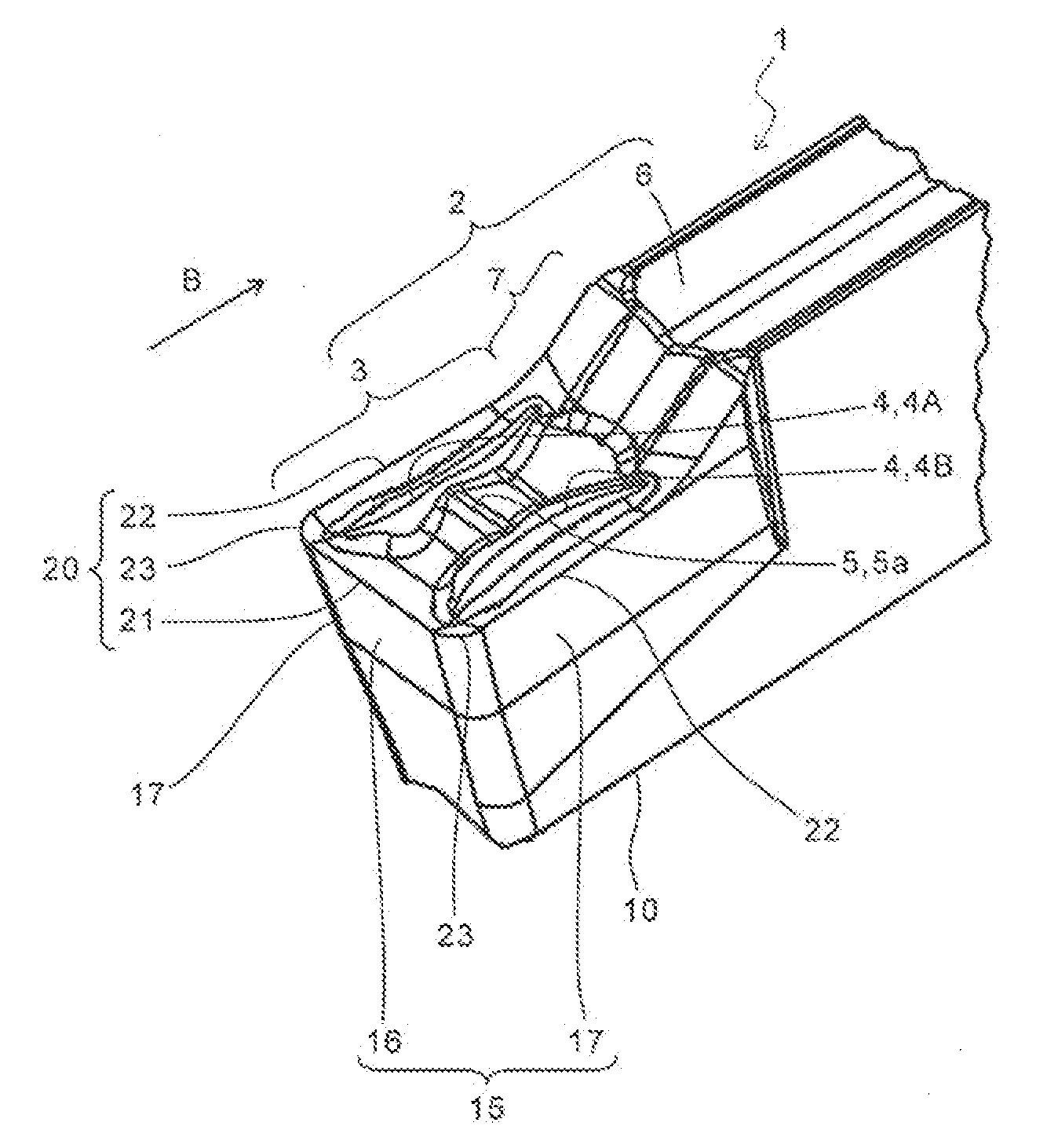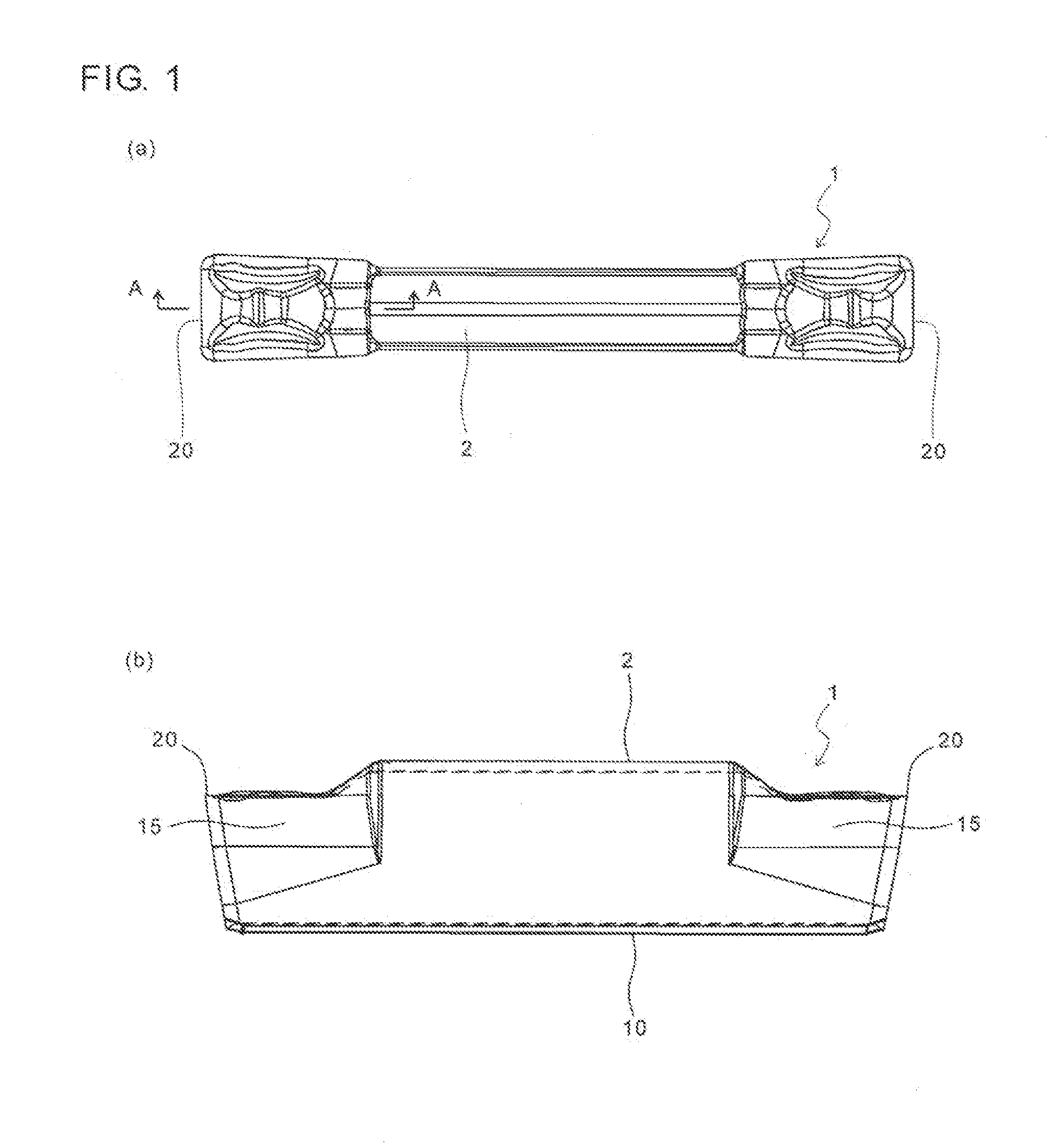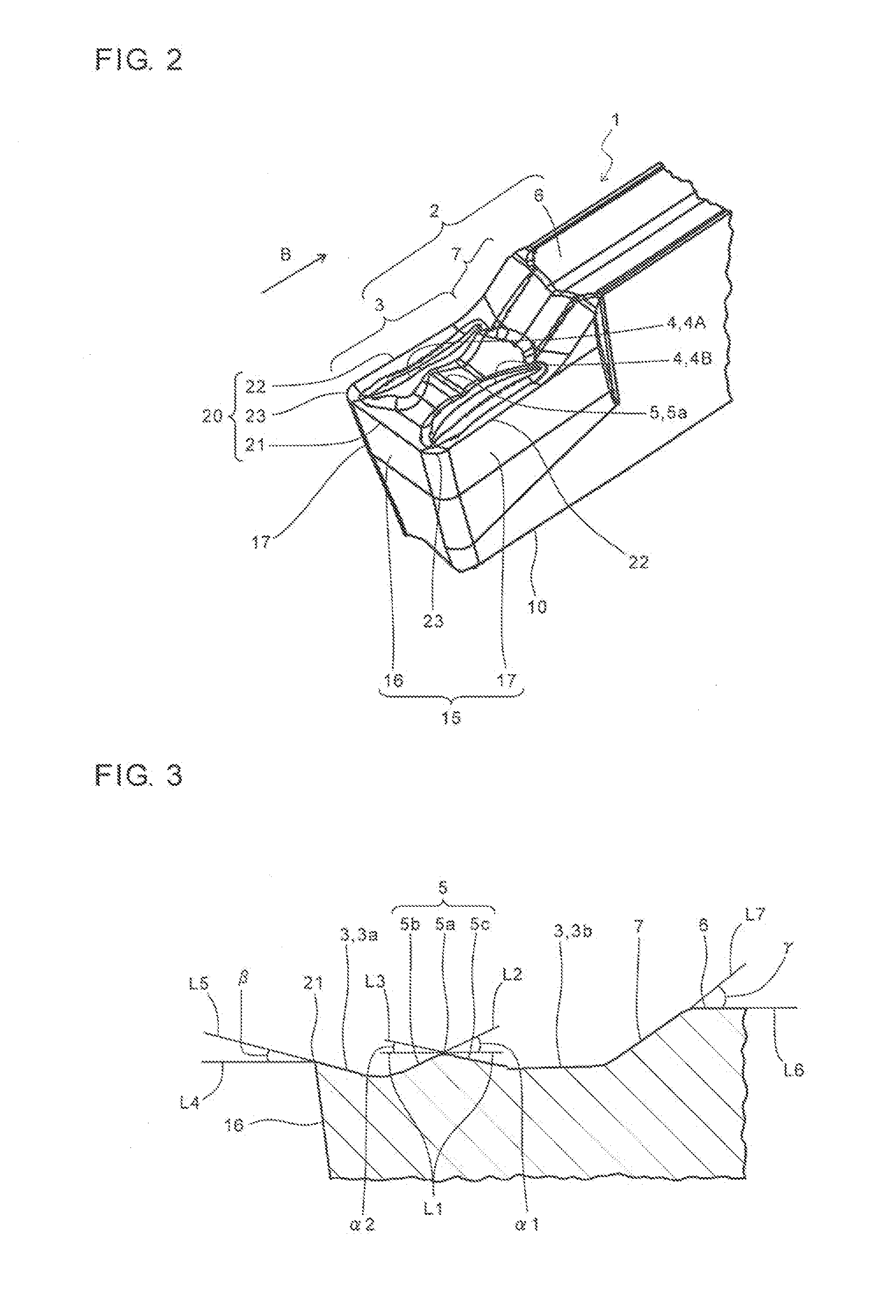Cutting insert, cutting tool, and method of manufacturing machined product using the same
a technology of cutting tools and cutting inserts, which is applied in the direction of cutting inserts, manufacturing tools, shaping cutters, etc., can solve the problems that chips generated from workpieces with rich ductility cannot be smoothly discharged backward (outward) and achieve the effects of rich ductility, easy chip division, and increased wear resistan
- Summary
- Abstract
- Description
- Claims
- Application Information
AI Technical Summary
Benefits of technology
Problems solved by technology
Method used
Image
Examples
first embodiment
[0074]A method of manufacturing a machined product according to a first embodiment of the present invention is described in detail below with reference to FIG. 12, by taking the case of performing the outer diameter grooving process by attaching the insert 1.
[0075]The method of manufacturing the machined product according to the present embodiment by using a cutting tool 50 includes the following steps (i) to (iii).
[0076](i) rotating a workpiece 100 in a direction of arrow H, as shown in FIG. 12(a);
[0077](ii) bringing the cutting edge 20 of the cutting tool 50 into contact with the rotating workpiece 100 as shown in FIG. 12(b) by moving the cutting tool 50 in a direction of arrow I, as shown in FIG. 12(a), thereby cutting the workpiece 100 (the outer diameter grooving); and
[0078](iii) separating the cutting tool 50 from the workpiece 100 by moving the cutting tool 50 in a direction of arrow J, as shown in FIG. 12(c).
[0079]A desired machined product is obtainable by cutting the workp...
second embodiment
[0083]Next, a method of manufacturing a machined product according to a second embodiment of the present invention is described in detail below with reference to FIG. 13, by taking the case of performing the outer diameter grooving process by attaching the insert 31.
[0084]The insert 31 of the present embodiment permits a smooth crosscut milling process for enlarging a groove width, besides the grooving process for forming a groove.
[0085]Firstly, as the traversing process for enlarging the width of the groove, usually, the steps of the grooving process as shown in FIGS. 12(a) to 12(c) are required to be repetitively performed in a lateral direction. As a result, somewhat irregularity may be formed on a bottom surface 101 of the enlarged groove, as shown in FIG. 13(a).
[0086]Subsequently, by moving a cutting tool 55 in a direction of arrow K as shown in FIG. 13(a), the bottom surface 101 of the groove can be flattened as shown in FIG. 13(b).
[0087]A desired machined product is obtainabl...
PUM
| Property | Measurement | Unit |
|---|---|---|
| inclination angle α2 | aaaaa | aaaaa |
| inclination angle α2 | aaaaa | aaaaa |
| rake angle | aaaaa | aaaaa |
Abstract
Description
Claims
Application Information
 Login to View More
Login to View More - R&D
- Intellectual Property
- Life Sciences
- Materials
- Tech Scout
- Unparalleled Data Quality
- Higher Quality Content
- 60% Fewer Hallucinations
Browse by: Latest US Patents, China's latest patents, Technical Efficacy Thesaurus, Application Domain, Technology Topic, Popular Technical Reports.
© 2025 PatSnap. All rights reserved.Legal|Privacy policy|Modern Slavery Act Transparency Statement|Sitemap|About US| Contact US: help@patsnap.com



